#classic everest base camp trek
Link
The Classic Everest Base Camp Trek follows a conventional route through the Jiri. Classic EBC Trek starts after a seven to eight hours drive from Kathmandu to Jiri. We pass through the beautiful pastures, farmlands, panoramic landscapes of the Himalayas, the stunning waterfalls, rhododendron forests. On reaching the Everest Base Camp, we hike to Kalapattar, we will enjoy the majestic views of mountains like Mt. Everest, Mt. Lhotse, Mt. Nuptse, Mt. Amadablam, Mt. Pumori, Mt. Thamserku, etc.
Paradise Himalayan Journey has designed 22 days Classic Everest Base Camp Trek so as to offer you the great experience and thoughtfulness during the adventure trekking to the Base camp of World famous Mt. Everest (8848.86 m).
#trekkinginhimalayas#trekking in nepal#everest base camp trek#classic everest base camp trek#everest base camp#kalapathar#kalapathar trek#mt everest#paradise himalayan journey#everest#kalapathar base camp
0 notes
Text
How much does it cost to trek to Everest Base Camp?
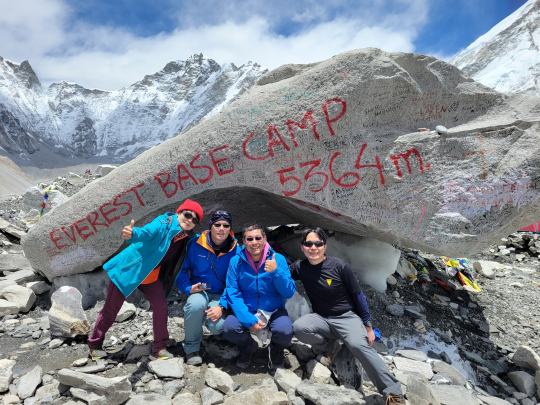
It is a most asked question amongst the thrill seekers who wanted to visit Everest Base camp once in a lifetime. Whether you hike to Everest Base Camp on your own or with a guide will affect how much it will cost. In addition, numerous other considerations, such as the route you take, your meals and lodging, come into play. An average classic Everest Base Camp trek, which most hikers complete and begins in Lukla, can cost roughly *USD 1,200. Luxury expeditions to Everest Base Camp might run you between $3,300 and $4,500 per person. The price of the Everest base camp trek also depends on the days you choose. There are 12 Days Everest Base Camp Trek and 14 Days Everest base camp trek itinerary.
How much does it cost to trek to Everest Base Camp? Here are the expected cost breakdowns for the Everest Base Camp trip, including guide, porter fees, travel expenses, permits, and the cost of trekking supplies and transportation.
The cost of lodging
During the trek, you will mostly stay in basic teahouses known as teahouses. However, if you’ve signed up for a luxury journey, you’ll stay in the well facilitated lodges at some places. Major trekking hubs like Lukla, Phakding, and Namche Bazaar provide a wider range of lodging options.
The cost of a twin-sharing room in a basic teahouse ranges from USD 5 to USD 10 per day. It means, for a 12-day hike, your total accommodation costs will around USD 200. Luxury lodging can cost more between $200-250 per night.
Permit expenses
Trekkers are required to obtain two permits for Everest base camp trek that are Sagarmatha National Park Permit and Khumbu Pasang Lhamu Rural Municipality Entrance Permit.
Cost of trekking equipment
The costs of the trekking gears are depending on the quality you choose. You can easily get all the qualities trekking equipment in Thamel. In the Himalayas, weather and terrain conditions might be difficult, so it makes sense to take quality equipment.
Backpacks, trekking poles, polarized sunglasses, route maps, torches, extra batteries, and rain jackets are all included in the list of trekking necessities. Additionally, the tools can be rented. Your total trekking equipment should cost you between USD 300 to USD 500.
Lukla flights or ground transports expenses.
Normally, a starting point of this trek is Lukla, and is often reached by flight from Kathmandu or Ramechhap. The approximate cost of the round trip flight is USD 390 per person.
Alternatively, from Kathmandu, you can take a local bus or jeep drive to Jiri or Salleri. After reaching Salleri or Jiri, you need to trek about 2-4 days to get. It is a legendary foothill trail that was followed by Sir Edmund Hillary and Tenzing Norgey Sherpa in their Everest Expedition in 1953. The cost of hiring a jeep is from $150-200 and $12-15 for local bus ticket.
Cost of independent trip versus a guided tour
Local trekking companies in Kathmandu operate guided group tours to Everest Base Camp. If you trek with an organized group all of your logistics, including accommodations, foods, transportations, guide, permits and porters are arranged by the agency.
A fully guided trek ought to cost between USD 1,300 and USD 1,500. You can trek with both guide and porter, or only with porter who serves as both a guide and a porter for independent treks.
The cost of the independent trek can be varying, depending on how much you eat food and the lodging you choose. Normally, it would cost between $ 1000-1200 including all your meals, Lukla flights, porter, accommodations and foods during the trek.
Note: Trek to Everest Base Camp with an organized group through local agency or with local guide and porter is much safer than the independent hike.
Porter wages
If you need porters for the Everest base camp trek, you can hire them from Lukla. A porter from Lukla typically charges USD 20-25 per day and can communicate in English. A porter is advised if you are a novice trekker. Hiring a porter can make your trekking in Nepal more comfort and pleasurable.
Food and drink expenses
The costs of food are variable depending on what you choose in your meal. Food and water prices may increase as you go higher. There are plenty additional choices for meal, including soups, momos, fried rice noodles, and spring rolls. Pasta, pizza, or chicken sizzlers are also available at a high cost. You should expect to pay between USD 5-7 for a basic breakfast and USD 6–12 for lunch or dinner. Bottled water might cost anywhere between USD 1.5 to USD 4. You can refill your bottled with boiled or filtered water as an alternatives of buying bottled water.
Travel insurance costs
Having a full coverage of travel insurance is beneficial for Everest base camp trek in case of any losses or emergencies. Altitude sickness, mishaps, and canceled flights are additional scenarios that could be difficult. Due to this reason, travel insurance is required to reduce all of these hazards. You can purchase full coverage of insurance around $150-200 dollar that covers all your medical, health and emergency rescue services. It is highly recommended for your financial security.
1 note
·
View note
Text
Everest base camp trek 14 Days Itinerary
Everest base camp trek is an iconic high altitude trek in Nepal. It lets you enjoy the serene beauty of Everest himalayas. This classic Everest base camp trek is a lifetime experience for travelers who wish to reach the base camp of Mount Everest at least once in a lifetime. Mount Everest base camp trekking offers the best panoramic view of Mount Everest and surrounding mountain peaks and ranges.
Similarly, Everest base camp trail allows you to explore around the world heritage site - Sagarmatha National Park, and get to encounter the unique culture and tradition of world-renowned hikers 'Sherpa' and ethnic Tibetan people.
The 14 days Everest base camp trek is one of the best long-distance trips to basecamp Mount Everest. It allows travelers to encounter high altitudes, off-the-beaten tracks, ridges, steep slopes, forest areas and villages, terraces and farm lands, and so on. This standard and advanced base camp Everest trekking package lasts for 12 days during which visitors will be rewarded with the supreme natural views and simple yet heart-warming hospitality of local Sherpa people.
14 Days Itinerary of Everest Base Camp Trek
Day 1: Arrival in Kathmandu
Day 2: Flight to Lukla and Trek to Phakding
Day 3: Phakding to Namche Bazaar
Day 4: First Acclimatization at Namche Bazaar
Day 5: Namche to Phortse (Phorche)
Day 6: Phortse to Dingboche
Day 7: Second Acclimatization day at Dingboche
Day 8: Dingboche to Lobuche
Day 9: Trek From Gorakshep to Everest base camp and back to Gorakshep
Day 10: Gorakshep to Pheriche via Kalapatthar
Day 11: Pheriche to Namche
Day 12: Namche to Lukla
Day 13: Lukla to Kathmandu
Day 14: Departure Day
There are other several packages of Everest in you can travel to everest in 1 day to 7 days. Like
Everest base camp helicopter tour is a one-day heli trip to the Khumbu Region of Nepal in which you are able to explore different places Like Lukla, Pheriche, Kalapatthar, fly over of Everest base camp and so on.
Similarly we have very short and sweet package for Khumbu Region.
Everest base camp short trek which is 7 days up hill trekking package of Khumbu Region. In this package you have to trek uphill to EBC and return back by Helicopter to Kathmandu.
3 notes
·
View notes
Text
Best Easy Treks in Nepal for Beginners
Choosing easy treks for beginners in Nepal offers several advantages, making it an ideal option for those who are new to trekking or seeking a more relaxed and enjoyable experience. Here are some compelling reasons to opt for easy treks:
Accessibility: Easy treks in Nepal are often located in accessible regions with well-defined trails and gradual ascents, making them suitable for trekkers of all fitness levels. These treks typically do not require extensive preparation or prior trekking experience, allowing beginners to ease into the world of trekking at their own pace.
Scenic Beauty: Despite their lower difficulty level, easy treks in Nepal still offer stunning views of the Himalayan landscapes, lush forests, picturesque villages, and cascading waterfalls. Trekkers can immerse themselves in the natural beauty of Nepal without the need for strenuous climbs or high altitudes.
Cultural Experience: Many easy treks in Nepal pass through traditional villages inhabited by diverse ethnic communities such as Sherpas, Gurungs, and Tamangs. This provides an excellent opportunity for beginners to learn about the local culture, customs, and way of life, enhancing the overall trekking experience.
Less Crowded Trails: Compared to more popular and challenging trekking routes, easy treks in Nepal tend to be less crowded, especially during the off-peak seasons. This allows beginners to enjoy a more peaceful and tranquil trekking experience, with fewer distractions and a greater sense of serenity.
Safety: Easy treks are generally considered safer for beginners, as they involve minimal risk of altitude-related illnesses and technical challenges. The well-marked trails, moderate altitudes, and relatively short duration of these treks provide a safer environment for novice trekkers to gain confidence and enjoy the experience without undue stress or discomfort.
Ghorepani Poon Hill Trek: A classic trek offering stunning sunrise views over the Annapurna and Dhaulagiri mountain ranges, passing through rhododendron forests and charming Gurung villages.
Langtang Valley Trek: Perfect for beginners, this trek offers panoramic views of the Langtang range, opportunities to experience Tamang culture, and visits to Buddhist monasteries.
Everest View Trek: Ideal for those short on time, this trek provides breathtaking views of Mt. Everest, Mt. Lhotse, Mt. Ama Dablam, and other Himalayan peaks, with a visit to the famous Tengboche Monastery.
Annapurna Base Camp Trek (Short Version): A shorter version of the classic Annapurna Base Camp trek, offering awe-inspiring views of Annapurna and Machhapuchhre peaks, and a chance to soak in natural hot springs.
Ghandruk Loop Trek: This easy trek takes you through terraced fields and traditional Gurung villages, with close-up views of Annapurna and Machhapuchhre, and a visit to the picturesque village of Ghandruk.
Pokhara Valley Trek: Explore the tranquil landscapes around Pokhara, including Phewa Lake, Sarangkot Hill for sunrise views, and peaceful walks through forests and farmlands.
Bhote Koshi River Valley Trek: Follow the Bhote Koshi River through lush valleys and terraced fields, with opportunities for white-water rafting, cultural encounters with ethnic communities, and stunning mountain views.
Helambu Trek: Located close to Kathmandu, this trek offers a glimpse into Sherpa and Tamang cultures, with scenic walks through rhododendron forests, Buddhist monasteries, and traditional villages.
Sikles Trek: A hidden gem in the Annapurna region, this trek takes you through forests, terraced fields, and ethnic Gurung villages, offering panoramic views of the Annapurna and Manaslu ranges.
Dhampus Australian Camp Trek: A short and easy trek near Pokhara, offering panoramic views of the Annapurna and Dhaulagiri ranges, along with visits to traditional Gurung villages and terraced fields.
1 note
·
View note
Text
Nepal Everest Base Camp Trekking 14-day trek booking open for 2024 autumn and 2025.
0 notes
Text
Lukla, the gateway to Mt. Everest from various angles.
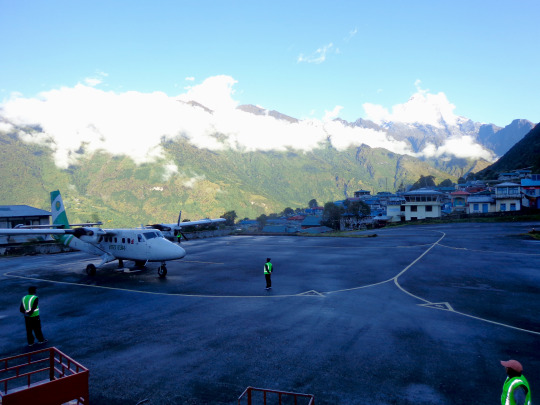
0 notes
Text
EBC Trek via Jiri | Everest Base Camp Trek by Land
The Everest Base Camp Trail (EBC) via Jiri is one of the classic treks that journey you to the very core of the Himalayan region and Mt. Everest, the highest peak on the planet. In contrast with the popular Lukla – EBC itinerary, which takes the more steep ascent route to the peak, the Jiri route gives the hikers a longer time and a chance for a more straightforward ascent that eventually leads to better acclimatization and closer touch with the culture and environment of the valley.
➡️ Trip Starts and Ends at Kathmandu
Bookings Open for Spring (March, April, May) 2024
📅 Outline Itinerary:
Day 1: Arrive at Tribhuwan International Airport (TIA) Kathmandu(1320m)
Day 2: Drive from Kathmandu to Shivalaya (1770m) by privet transportation or Express Bus
Day 3: Shivalaya to Kinja (1030m), Trek 6-7 hrs
Day 4: Kinja to Lamjura La (3530m), Trek 6-7 hrs
Day 5: Lamjura-la to Junbeshi (2700m), Trek 4 hrs
Day 6: Junbeshi to Nunthala (2194m) via Taksindu Pass (2960m), Trek6- 7 hrs
Day 7: Nunthala to Bupsa (2360m), Trek 6-7 hrs
Day 8: Bupsa to Chaurikharka (2700m), Trek 6 hrs
Day 9: Chaurikharka to Jorshalle (2730m), Trek 5 hrs
Day 10: Jorshalle to Namche Bazaar (3443m), Trek 4 hrs
Day 11: Acclimatization Day
Day 12: Namche to Dole (4200m), Trek 5 hrs
Day 13: Dole to Machhermo (4470m), Trek 4 hrs
Day 14: Machhermo to Gokyo (4790m), Trek 4hrs
Day 15: Excursion day to fifth Gokyo Lake
Day 16: Gokyo to Thangna (4750m) after early Sunrise at Gokyo, Trek 3 hrs
Day 17: Thangna to Zongla (4710m) via Cho-La (5420), Trek 7 hrs
Day 18: Zongla to Gorakshep (5410m), Trek 5 hrs
Day 19: Excursion day to Everest Base Camp (5364m)
Day 20: Gorakshep to Pheriche (4220m) after early Sunrise at Kalapather (5555m), Trek 7 hrs
Day 21: Pheriche to Namche (3443m) via Exploring Tengbuche (3875m), Trek 7hrs
Day 22: Namche to Lukla (2850m), Trek 7 hrs
Day 23: Fly back to Kathmandu
Day 24: Final departure onward destination
We are pleased to offer the flexibility of tailoring your journey to your desired duration and intrests
For detailed information and bookings, visit our website:
Address- Z Street - Thamel, Kathmandu, Nepal
Phone- +977 1 4701233
Mobile, WhatsApp & Viber- +977 9849023179 (Dipak Pande)
Email- [email protected]
Website- www.mountainrocktreks.com
#EBCJiriTrek #LandRouteToEBC #ClassicEverestTrek #JourneyThroughSherpaCulture #HimalayanAdventure #TrekkingNepal #AuthenticNepalExperience #MountainMagic #dipak #Thamel #travelagency #paknajol
#Zstreet #mountainrocktreks #MRT2024 #mountainguide
0 notes
Text
Everest Base Camp Trek
Everest Base Camp Trek is a classic trekking adventure in the foothills of the world’s highest mountain, Mount Everest. Trudging along the rugged trails of the Himalayas, decorated with mountains and landscapes, this trek is undoubtedly one of the best walks on earth.
#everest base camp trek#everest base camp#trekking in nepal#himalayas#adventuretravel#mountainviews#explorenepal#outdooradventure#nepal#trekkingadventure
0 notes
Text
The Best Camping Stove for Outdoor Cooking: Top Recommendations
The best camping stove depends largely on your precise needs, such as cooking style and trip length. Propane stoves stand out for their ease of use and versatility. They're particularly great for those who value convenience, with models like the Coleman Classic Propane Stove being highly popular due to its clean-burning fuel capability. But remember, "best" can differ based on personal preference - there's no one-size-fits-all when it comes to outdoor cooking gear. Now, let's delve into different types of stoves you might consider, starting with propane stoves.
Our top recommended camping stoves include the Coleman Cascade Classic for its improved flame control, auto-ignition, and value for the price, and the Camp Chef Everest 2X praised for its flame control and power, making it capable of cooking a wide range of camp meals. These stoves offer high-performance grilling power, adjustable wind protection, and precise temperature control for even cooking during outdoor adventures.
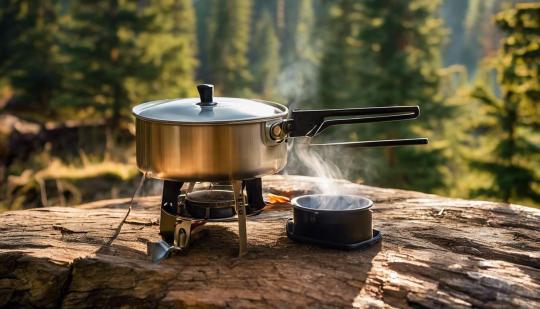
Types of Camping Stoves
When it comes to outdoor cooking, having the right camping stove can make a significant difference. Let's start by talking about Propane Stoves. Many campers choose these due to their convenience and ease of use. Propane stoves are widely available and offer clean-burning fuel, making them suitable for various outdoor cooking needs. For example, the Coleman Classic Propane Stove and the Coleman Triton+ 2-Burner Propane Gas Camping Stove are popular choices in this category.
The beauty of propane stoves lies in their simplicity – just screw on a propane canister, push a button or twist a knob, and you have an instant flame at your disposal. This quick ignition and consistent heat output make them ideal for both beginners and experienced camp cooks alike. Plus, propane is clean-burning fuel, so you won't have to deal with a lot of soot or messy residue after cooking.
Moving on to Liquid Fuel Stoves, these camping stoves run on white gas or unleaded gasoline, providing a reliable source of fuel—especially in remote areas where propane might be hard to find. Liquid fuel stoves are also known for their versatility and ability to perform well in different weather conditions. In challenging environments where temperature and altitude fluctuate, liquid fuel stoves can be a lifesaver for campers who rely heavily on their stove for meal preparation.
For instance, during high-altitude treks or winter expeditions, where propane canisters might struggle to maintain pressure, liquid fuel stoves remain steady and dependable. Notable models like the MSR WhisperLite Universal and the Primus OmniLite Ti exemplify the reliability and adaptability that liquid fuel stoves offer.
Sure, they might require more priming and maintenance compared to propane stoves, but their resilience and ability to function in adverse conditions certainly make them worth considering for serious outdoor enthusiasts. Additionally, using readily available unleaded gasoline provides an advantage if you happen to run out of white gas while deep in the backcountry—a situation that could leave you stranded with a propane-only stove.
Each type of camping stove has its own distinct advantages to consider when planning your outdoor adventure. Now let's move on to explore wood-burning stoves and delve into their unique features and benefits.
Key Features of Top-Notch Camping Stoves
When preparing for an outdoor adventure, having the right camping stove can make all the difference between a memorable meal and a frustrating cooking experience. Let's explore the essential features that set top-notch camping stoves apart.
Portability
One of the most vital qualities of an excellent camping stove is its portability. After all, you don't want to lug around a heavy, cumbersome stove when you're trying to enjoy the great outdoors. The best camping stoves are designed to be compact and lightweight, making them easy to transport and set up at your campsite. Look for foldable designs and carrying handles, as these features enhance portability by allowing you to pack and carry the stove with ease. Whether you're backpacking or car camping, a portable stove will ensure that you can enjoy delicious meals without being weighed down by bulky cooking equipment.
Wind Resistance
Outdoor cooking can be challenging, especially in exposed areas where wind can disrupt the flames and affect cooking efficiency. That's why top-quality camping stoves come equipped with built-in wind guards or wind-resistant burner designs. These features ensure that the stove can maintain efficient heat output, even in blustery conditions. Wind resistance is crucial for ensuring a consistent and reliable cooking experience, allowing you to prepare meals confidently regardless of outdoor elements.
Simmer Control
One hallmark of a superior camping stove is its ability to provide precise flame control, allowing you to adjust the heat for simmering, boiling, and everything in between. This level of control is essential for creating a wide variety of outdoor meals, from gently warming sauces to boiling water for hot beverages. The capability to finely adjust the flame sets top-notch camping stoves apart, enabling outdoor chefs to craft culinary delights with precision and versatility.
By prioritizing portability, wind resistance, and simmer control in your selection of a camping stove, you'll ensure that your outdoor cooking experiences are seamless and enjoyable. Each of these features plays a critical role in enhancing your culinary adventures amidst nature.
Now, let's shift our focus to important safety guidelines when using camping stoves to ensure your outdoor culinary escapades are not only exciting but also secure.
Safety Guidelines with Camping Stoves
When you're out in nature, preparing a meal with a camping stove can be a rewarding experience, but it's crucial to be mindful of safety considerations. Let's explore some important safety guidelines to ensure your outdoor cooking adventures are as safe as they are enjoyable.
Ventilation for Carbon Monoxide Safety
While the great outdoors offers a sense of freedom, it's imperative to remember that using camping stoves in well-ventilated areas is critical for your safety. Carbon monoxide is a colorless, odorless gas that can pose a serious risk if there isn't enough ventilation when the stove is in use. To avoid the buildup of carbon monoxide, never use camping stoves inside tents or enclosed spaces. Always position them in areas where there is plenty of fresh air and excellent airflow.
"It's comparable to how we're always careful about using certain appliances indoors at home—camping stoves require similar precautions but with added attention to outdoor environmental factors."
The Importance of Stability
Stability is another essential aspect of camping stove safety. When setting up your stove for cooking, ensure it is placed on a stable, flat surface to minimize the risk of accidents. Many camping stoves come with adjustable legs designed to provide stability even on uneven terrain. By prioritizing stability, you reduce the likelihood of accidental spills or tipping over, thus enhancing overall safety during meal preparation in outdoor settings.
Remember, good habits such as these contribute to the uninterrupted enjoyment of outdoor experiences.
In summary, these guidelines emphasize the importance of ventilation and stability when using camping stoves for outdoor cooking endeavors.
Detailed Review of Top-Recommended Camping Stoves
When it comes to choosing the right camping stove, it's important to consider factors such as performance, durability, and user satisfaction. Several top-rated camping stoves stand out based on these criteria: the Coleman Triton+ 2-Burner Propane Gas Camping Stove, Camp Chef Everest 2X, and the Gas ONE Dual Fuel stove.
The Coleman Triton+ 2-Burner Propane Gas Camping Stove is a reliable option known for its sturdy build and consistent performance. It offers two burners, allowing for versatile cooking while camping. The design is user-friendly, making it easy to set up and operate, which is especially useful when you're out in the wilderness and need a quick meal. Its fuel efficiency and wind resistance make it a popular choice among outdoor cooking enthusiasts.
The Camp Chef Everest 2X has been highly regarded for its exceptional cooking power and durability. With a large cook surface, this stove provides ample space for preparing meals while camping. It boasts impressive wind resistance, ensuring that you can continue cooking even in challenging outdoor conditions. Additionally, the fast boil time and excellent simmer ability make it a versatile option for various cooking needs.
The Gas ONE Dual Fuel stove has garnered attention for its great flame control and lightweight yet sturdy design. The piezo auto-ignition feature adds convenience to the overall user experience. While it may lack wind protection compared to other models, its single burner configuration makes it a practical choice for solo campers or small groups looking for a budget-friendly option.
These top-recommended camping stoves offer a diverse range of features and capabilities, catering to different preferences and needs of outdoor enthusiasts. By exploring comprehensive insights and comparisons of these stoves, potential buyers can make informed decisions based on their specific requirements.
In the realm of outdoor cooking, the choice of camping stove can greatly impact your culinary adventures. Let's now delve into strategies for selecting an ideal camping stove that aligns perfectly with your outdoor cooking aspirations.
Choosing the Ideal Camping Stove for Your Outdoor Cooking
When it comes to outdoor cooking, selecting the right camping stove can significantly impact your overall experience. Let's explore some crucial considerations to bear in mind as you search for the perfect camping stove to meet your culinary needs in the great outdoors.
Consider Your Cooking Style
The first step in choosing an ideal camping stove is considering your cooking style. Are you planning to cook simple, one-pot meals? Or are you more of a gourmet outdoor chef who enjoys preparing elaborate, multi-course meals? For basic cooking needs, a single-burner or compact stove may suffice. However, if you're someone who likes to experiment with complex recipes and requires precise temperature control, investing in a stove with multiple burners and adjustable flame controls is essential. Thinking about your typical outdoor menu will help you determine the size and functionality you need in a camping stove.
Fuel Availability and Compatibility
Another critical factor to consider when selecting a camping stove is fuel availability at your intended camping destinations. It's important to assess the types of fuel that are easily accessible at your planned campsites. If you're heading to areas with limited access to specific fuels, such as butane or liquid fuel, consider opting for stoves that can accommodate readily available fuel types like propane. This ensures that you won't encounter difficulties sourcing fuel for your stove during your outdoor adventures. Additionally, being aware of alternative fuel options, such as multi-fuel stoves that can run on different types of fuel, provides flexibility in diverse camping environments.
Budget and Desired Features
Balancing your budget with desired features is a key aspect of choosing the right camping stove. Identify the essential features that align with your outdoor cooking needs while staying within your budgetary constraints. Important features to consider include ignition type (manual or electronic), heat output measured in BTUs (British Thermal Units), burner control, wind resistance capabilities, and portability. For example, if weather conditions are unpredictable or windy at your campsite, selecting a stove with wind-resistant technology—such as Coleman's WindBlock™ system—can enhance cooking efficiency. Understanding which features are essential for your cooking preferences will assist in narrowing down your options and making an informed decision.
By carefully considering your cooking style, fuel availability, and budgetary parameters, you can confidently choose a camping stove that caters to your outdoor culinary aspirations while ensuring a seamless and enjoyable cooking experience during your camping expeditions.
A well-chosen camping stove offers more than just a means to prepare meals—it becomes an indispensable companion on your outdoor excursions. Now let's explore how the right stove can elevate your outdoor culinary adventures.
Enhance Your Outdoor Cooking Experience with the Right Stove
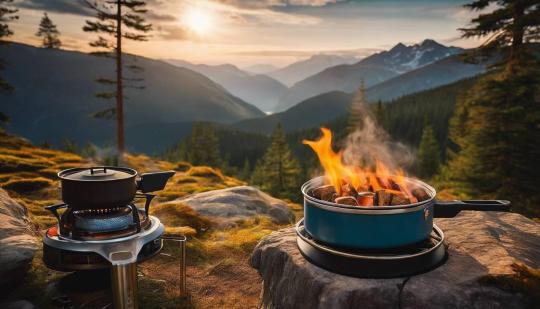
When it comes to spending time in the great outdoors, good food can often be a highlight of the adventure. Whether you're planning a weekend camping trip or a more extended journey, having the right camping stove at your side can make all the difference.
Imagine sipping hot coffee as the sun rises while you prepare a hearty breakfast on a reliable camp stove. With the right equipment, you can cook up a storm, no matter where you are. The convenience and ease of use that a reliable stove provides can transform your outdoor meals into memorable experiences.
Choosing the Right Stove for Your Needs
The key is to find a camping stove that meets your specific needs and cooking preferences. Considering factors such as the number of burners, fuel type compatibility, and BTU (British Thermal Unit) output can help you make an informed decision.
For instance, if you prefer quick meals and easy cleanup, a compact 1-burner camp stove might be the ideal choice for your solo adventures. On the other hand, larger camping groups may benefit from stoves with multiple burners, allowing for more elaborate meal preparations.
But beyond the practical considerations, the right camping stove brings versatility to your outdoor culinary endeavors. It allows you to broaden your menu options beyond basic campfire fare, elevating your outdoor dining experiences to new heights.
The ability to simmer, sauté, and stir-fry opens up endless possibilities for creative campsite cuisine. It's not just about sustenance – it’s about creating delicious moments and cherished memories around the campfire.
Imagine preparing freshly caught fish seared to perfection or simmering a savory stew as you share stories with friends under the starry sky. The right camping stove empowers you to take your outdoor cooking skills to new levels and turn simple ingredients into satisfying feasts.
In summary, selecting the right camping stove tailored to your needs can elevate your outdoor cooking experiences by offering convenience, versatility, and the opportunity to create unforgettable meals in beautiful natural settings.
Elevate your outdoor culinary adventures with the perfect camping stove - transforming meals into meaningful experiences amidst nature's beauty.
Camping chairs
Camping Air mattress
Camping lantern
Camping cots
Camping lunch ideas
0 notes
Text
Trekking in Nepal
Nepal, home to some of the world's highest mountains, is a trekker's paradise. With its diverse landscapes, rich cultural heritage, and warm hospitality, Nepal offers an unparalleled trekking experience for adventurers from around the globe.

The allure of trekking in Nepal lies in its breathtaking vistas, from towering peaks to verdant valleys and pristine lakes. Whether you're an experienced trekker seeking the challenge of high-altitude passes or a novice looking for a more leisurely stroll through picturesque villages, Nepal has something to offer for every type of adventurer.
One of the most popular trekking destinations in Nepal is the Annapurna Circuit, a classic trail that encircles the Annapurna massif. Trekkers on this route are treated to stunning views of snow-capped peaks, terraced hillsides, and charming villages inhabited by diverse ethnic groups.
For those seeking a more remote and off-the-beaten-path experience, the Manaslu Circuit Trek offers an opportunity to explore the rugged terrain and pristine landscapes of the Manaslu region. Trekkers on this route can immerse themselves in the unique culture and traditions of the local communities while enjoying panoramic views of the Himalayas.
Another iconic trekking destination in Nepal is the Everest Base Camp Trek, which takes trekkers to the foot of the world's highest peak. Along the way, trekkers pass through picturesque Sherpa villages, cross high mountain passes, and marvel at breathtaking views of Mount Everest and its surrounding peaks.
For a spiritual journey, trekkers can embark on the Langtang Valley Trek, which takes them through the sacred landscapes of the Langtang region. This trek offers a chance to visit ancient monasteries, encounter local wildlife, and witness traditional Buddhist rituals amidst the serene beauty of the Himalayas.
No matter which trekking route you choose, one thing is certain: trekking in Nepal is an experience like no other. It's a journey into the heart of the Himalayas, where every step brings you closer to nature, culture, and adventure. So lace up your boots, pack your backpack, and get ready for the adventure of a lifetime in Nepal.
0 notes
Text
Phaplu Everest Base Camp Trek
Phaplu Everest Base Camp Trek Drive In-Fly Out is a popular alternative to the classic Everest Base Camp Trek originating from the old town of Salleri and Phaplu or avoid to fly Lukla or flight cancellation or drive at mid night to Ramechhap. This journey, while lengthy lets you immerse in the traditional Sherpa villages of lower stretches of Solukhumbu district while savoring the adventure that Everest region has to offer.
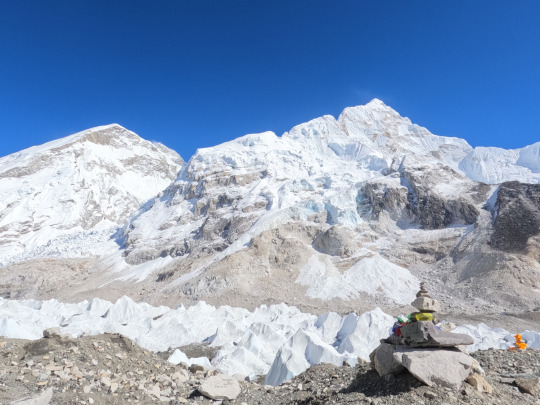
0 notes
Text
The Ultimate Vista: Where to Find the Best View of Mount Everest"
For those seeking the most breathtaking view of Mount Everest, there are several vantage points along trekking routes and viewpoints in Nepal and Tibet that offer unparalleled panoramas of the world's tallest peak. Here are some of the best locations to behold the majestic beauty of Everest:

Kala Patthar (Nepal): Located near Everest Base Camp along the classic Everest Base Camp Trek route, Kala Patthar (5,643 meters / 18,513 feet) is renowned for offering one of the closest and most iconic views of Mount Everest. Trekkers ascend to this high point early in the morning to witness the sunrise casting a golden glow on the towering peak, creating an unforgettable sight.
Gokyo Ri (Nepal): Situated in the Gokyo Valley within the Sagarmatha National Park, Gokyo Ri (5,357 meters / 17,575 feet) provides a stunning panoramic view of Everest, as well as neighboring peaks such as Cho Oyu and Lhotse. The trek to Gokyo Ri is less crowded compared to Kala Patthar, offering a serene and picturesque setting.
Everest Base Camp (Tibet): While Everest Base Camp on the Tibetan side does not offer a view of the summit itself, it provides a unique perspective of the mountain's massive north face. Visitors can witness the daily activities of climbers preparing for their ascent and enjoy the stark beauty of the surrounding Tibetan plateau.
Tengboche Monastery (Nepal): Perched on a hilltop in the village of Tengboche, this historic monastery offers a stunning backdrop of Everest and Ama Dablam. The tranquil ambiance and spiritual significance of Tengboche Monastery make it a favorite stop for trekkers on the Everest Base Camp Trek.
Namche Bazaar (Nepal): As the largest town in the Khumbu region, Namche Bazaar offers several viewpoints from which to admire Everest and its neighboring peaks. The Namche Viewpoint and Everest View Hotel provide panoramic vistas of the Everest massif, offering a taste of the grandeur of the Himalayas.
Each of these locations offers a unique perspective and unparalleled beauty, providing trekkers and travelers with unforgettable glimpses of the world's highest peak. Whether from a high mountain pass, a serene monastery, or a bustling mountain town, the view of Mount Everest is sure to leave a lasting impression on all who behold it.
0 notes
Text
Where To Trek In Nepal? In March, April, May In 2024
A classic trek that takes you to the base camp of Mount Everest, offering stunning views of the world's highest peak and surrounding Himalayan giants.The weather conditions during the Everest Base Camp trek vary significantly throughout March, April, and May due to the transition from winter to spring and then the onset of the pre-monsoon season. Here's what you can generally expect during these months. Read More: https://www.nepalecotrekking.com/blog/where-to-trek-in-nepal-in-2024
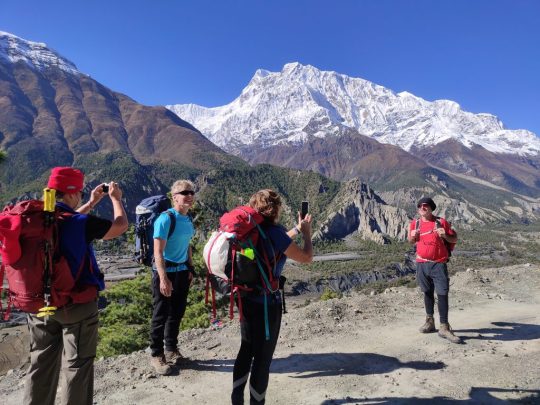
0 notes
Text
Discover the Beauty of Nepal: Scenic Views and Spectacular Landscapes
Nestled in the heart of the Himalayas, Nepal is a land of breathtaking beauty and awe-inspiring landscapes. From majestic mountains to lush valleys, this country has something to offer every traveler. Join us on a journey to discover the enchanting beauty of Nepal, where every corner reveals a new wonder waiting to be explored.
Unveiling Nepal's Natural Wonders
Exploring the Himalayas: The towering peaks of the Himalayas dominate Nepal's skyline, offering some of the most spectacular views on Earth. From the iconic Mount Everest to the serene Annapurna Range, trekking through these majestic mountains is a once-in-a-lifetime experience.
Tranquil Lakes and Rivers: Nepal is blessed with an abundance of serene lakes and pristine rivers. Lakes like Phewa, Begnas, and Rara mirror the surrounding peaks, creating picture-perfect landscapes. Meanwhile, rivers like the Trishuli and Seti offer thrilling rafting experiences amidst breathtaking scenery.Verdant Valleys and Hills: Beyond the mountains, Nepal's valleys and hills are adorned with lush greenery and terraced fields. Explore the scenic beauty of places like Pokhara, Kathmandu Valley, and Nagarkot, where every vista is a painting come to life.

Cultural Riches and Spiritual Serenity
Ancient Temples and Stupas: Nepal is home to a rich cultural heritage, with ancient temples and stupas dotting the landscape. Visit UNESCO World Heritage Sites like Swayambhunath, Boudhanath, and Pashupatinath to immerse yourself in the country's spiritual legacy.
Colorful Festivals: Experience the vibrant culture of Nepal through its colorful festivals and celebrations. From the exuberant festivities of Dashain and Tihar to the solemn rituals of Buddha Jayanti, these events offer a glimpse into the country's rich cultural tapestry.
Warm Hospitality: Nepalese people are renowned for their warm hospitality and friendly demeanor. Whether you're savoring traditional dal bhat with a local family or receiving blessings from a Buddhist monk, you'll feel welcomed with open arms wherever you go.
Adventures Await in Every Corner
Epic Trekking Trails: Nepal is a trekker's paradise, with a myriad of trails catering to all skill levels. Whether you're embarking on the classic Everest Base Camp trek or exploring the off-the-beaten-path trails of Langtang, the adventure never ends in Nepal.
Thrilling Wildlife Encounters: Discover Nepal's diverse wildlife in its national parks and conservation areas. Spot rare species like the Bengal tiger and one-horned rhinoceros in Chitwan National Park, or embark on a safari adventure in Bardia National Park.
Adrenaline-Pumping Activities: For thrill-seekers, Nepal offers a host of adrenaline-pumping activities. Test your limits with paragliding over Pokhara's Phewa Lake, bungee jumping off the towering cliffs of the Bhote Koshi River, or zip-lining through the lush forests of Dhulikhel.
Conclusion
Nepal is a land of unparalleled beauty and adventure, where every moment is a discovery waiting to happen. Whether you're trekking through the Himalayas, immersing yourself in the country's rich culture, or embarking on thrilling outdoor adventures, Nepal will captivate your heart and soul.
Read More: Nepal Tour Packages
0 notes
Text
7 Days Annapurna Base Camp Trek Itinerary

The Annapurna Base Camp Short Trek stands as one of the most captivating short trekking experiences, drawing numerous adventurers to the heart of the Annapurna region. Spanning seven days, this journey guides you through a mesmerizing trail to the base camp, offering ample time to marvel at the majestic peaks of the Annapurna giants, including Annapurna 1 (8091 m) and Annapurna South (7273 m), encircling the basin. Notable landmarks such as Glacier Dome, Gangapurna (7454 m), Fang (7647 m), and Machhapuchhare (6997 m) adorn the Himalayan panorama, enriching the trek with breathtaking vistas.
The Annapurna Base Camp Short Trek not only promises adventure but also unveils the rich tapestry of Nepal's natural and cultural heritage. As you traverse through diverse ethnic communities, lush forests, and vibrant wildlife habitats, you'll gain profound insights into the region's traditions and ecosystems.
This classic moderate trek offers a gateway to the foot of towering mountains, akin to a less strenuous version of the Everest Base Camp trek. The route ascends through river valleys, gradually revealing a breathtaking amphitheater of peaks as you approach the base camp.
Embarking from Machhapuchhare Base Camp (MBC) and culminating at Annapurna Base Camp (ABC), the trek encompasses rocky trails adorned with snow, leading to moments of awe-inspiring mountain vistas. The allure of witnessing the Annapurna ranges and Mount Fishtail amidst the tranquility of the Himalayan landscape is unparalleled.
Moreover, the journey is punctuated by enchanting experiences such as witnessing captivating sunrises and sunsets, soaking in hot springs, and encountering diverse flora and fauna. The trail meanders through rhododendron forests, quaint villages, and terraced fields, offering a glimpse into the lives of ethnic communities like the Gurung and Magar.
Commencing from Nayapul, a short drive from Pokhara, the trek immerses you in nature's embrace, evoking a sense of profound serenity. Traversing through Ghandruk Valley, adorned with vibrant rhododendron forests and picturesque rice terraces, the path leads to the charming village of Chhomrong.
The journey further unfolds with breathtaking vistas at Machhapuchhare Base Camp, where the towering peaks of Himchuli and Gangapurna dominate the horizon. As the trail progresses into the Annapurna Sanctuary, panoramic views of the Annapurna ranges and the sprawling glacier leave an indelible mark on the soul.
Retracing from Annapurna Base Camp, a leisurely descent to Jhinu Danda offers a rejuvenating soak in natural hot springs, culminating in a journey through rhododendron forests and local villages like Pothana and Tolkha. The trek concludes at Phedi, followed by a scenic drive back to Pokhara, leaving behind memories of a truly remarkable Himalayan adventure.
Annapurna Base Camp Short Trek Itinerary:
Day 1: Arrival in Nayapul and Trek to Ghandruk
Arrive in Nayapul from Pokhara and commence trekking.
Trek through lush landscapes and terraced fields to reach the picturesque village of Ghandruk.
Overnight stay in Ghandruk.
Day 2: Trek from Ghandruk to Chhomrong
Embark on a scenic trek through rhododendron forests and traditional villages.
Arrive at Chhomrong village, nestled in the lap of the Himalayas.
Overnight stay in Chhomrong.
Day 3: Trek from Chhomrong to Himalaya
Trek along the Modi Khola river valley, passing through dense forests and cascading waterfalls.
Reach Himalaya, a serene settlement surrounded by towering peaks.
Overnight stay in Himalaya.
Day 4: Trek from Himalaya to Annapurna Base Camp via Machhapuchhare Base Camp
Trek through rugged terrain, ascending towards Machhapuchhare Base Camp.
Marvel at the panoramic views of Machhapuchhare, Gangapurna, and other surrounding peaks.
Continue trekking to Annapurna Base Camp, surrounded by majestic Himalayan vistas.
Overnight stay at Annapurna Base Camp.
Day 5: Exploration Day at Annapurna Base Camp
Spend the day exploring the breathtaking surroundings of Annapurna Base Camp.
Enjoy mesmerizing views of the Annapurna range and the expansive glacier.
Engage in photography and soak in the tranquility of the Himalayas.
Overnight stay at Annapurna Base Camp.
Day 6: Trek from Annapurna Base Camp to Bamboo
Begin the descent from Annapurna Base Camp, retracing the trail towards Bamboo.
Descend through lush forests and picturesque landscapes.
Arrive at Bamboo and relax after a rewarding day of trekking.
Overnight stay in Bamboo.
Day 7: Trek from Bamboo to Jhinu Danda and Return to Nayapul
Trek from Bamboo to Jhinu Danda, known for its natural hot springs.
Enjoy a relaxing dip in the hot springs and rejuvenate your senses.
Trek back to Nayapul and conclude the trek.
Drive back to Pokhara and bid farewell to the Annapurna region's enchanting landscapes.
This itinerary offers a comprehensive overview of the Annapurna Base Camp Short Trek, allowing trekkers to immerse themselves in the natural beauty and cultural richness of the region within a span of seven days.
0 notes
Text
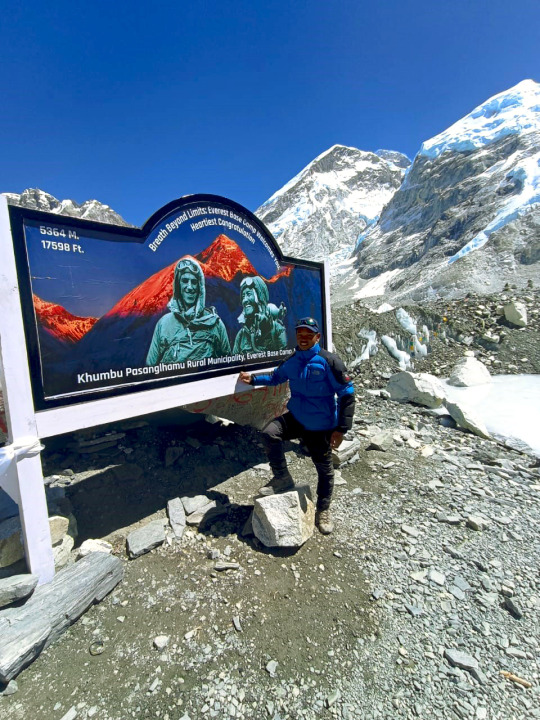

New landmark at Everest Base Camp added by Khumbu Pasanglhamu Rural Municipality, which looks iconic while it resembles 2 mountain legends Tenzing Norgay Sherpa and Sir Edmund Hillary.
https://www.viator.com/tours/Kathmandu/Everest-Base-Camp-Trek-Classic-Route-with-Yoga-Therapy/d5109-425525P2
0 notes